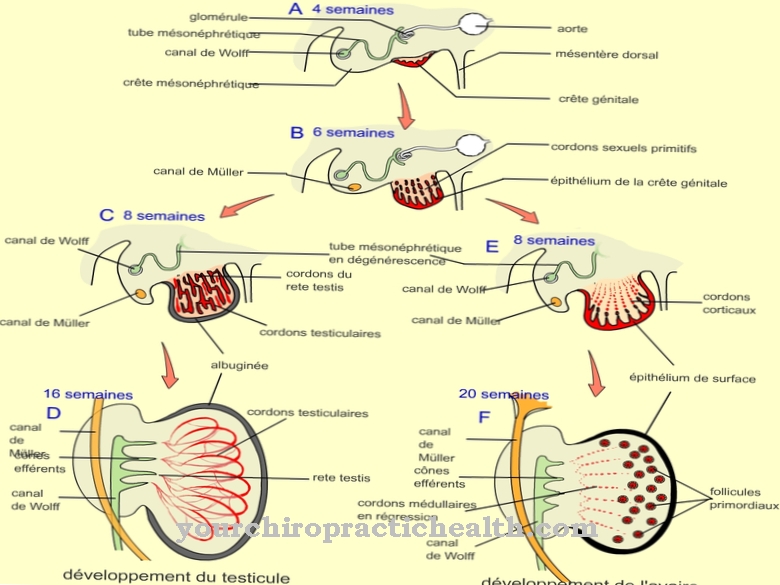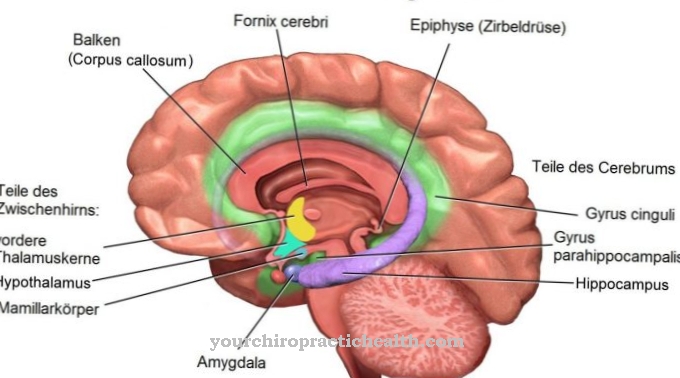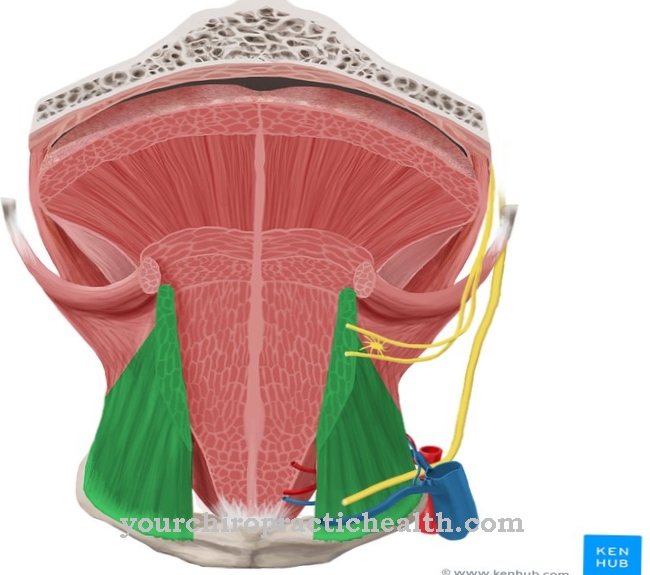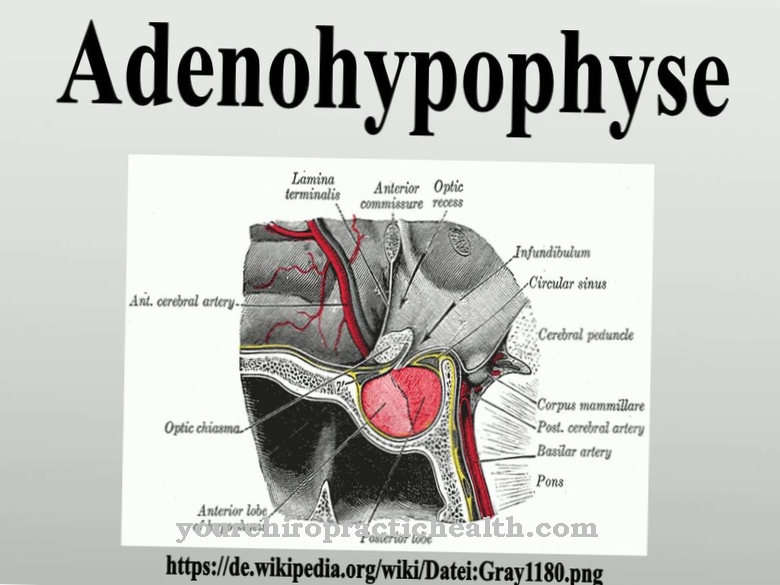The peritoneum is a thin one, too Peritoneum called, skin in the area of the abdomen and at the beginning of the pelvis. It is raised in folds and covers the internal organs. The peritoneum is used to supply the organs and produces a viscous fluid that reduces the frictional resistance when the organs move.
What is the peritoneum?
The peritoneum protects the area of the body down from the ribs to the pelvis. Most of the human organs, which are mainly covered by the peritoneum, are located in this part of the body.
The peritoneum holds them in place without becoming completely immobile. This function is particularly important in the area of the intestinal tract with its tightly-knit intestinal loops. Overall, the peritoneum is traversed by a number of blood vessels, lymph vessels and nerves that supply the organs.
Movements in the abdomen are facilitated by the peritoneum due to its ability to produce a secretion that increases the ability of the organs to slide during these changes in position. Because of its fold structure, the peritoneum can reach a size of up to two square meters.
Anatomy & structure
That is divided peritoneum in two sheets. The parietal sheet covers the abdominal wall from the inside. The visceral sheet, on the other hand, covers the parts of the abdominal organs.
There are five longitudinal folds in the peritoneum on the anterior abdominal wall. A number of peritoneum pockets are also formed within the abdominal cavity. The peritoneum produces a small amount of secretion. The average of the existing peritoneal fluid is between 50ml and 70ml.
This amount is sufficient to ensure that the organs can slide within the peritoneum. The nerve supply to the parietal leaf is very sensitive. It is also sensitive to adverse effects on the abdominal wall. The sensitivity of the peritoneum within the abdominal cavity around the organs is much less pronounced.
Functions & tasks
The peritoneum takes on a special protective function for all organs located within its leaves. The function is divided into two main areas. The body area below the rib cage is largely unprotected from other structures.
Although the muscles guarantee stability, they are not a system specifically designed to protect the organs like the peritoneum. Especially in the area of the lower digestive organs, it is important that the long structures of the digestive tract remain fixed in the sensitive loop position. In a further task, the peritoneum increased the limited but necessary mobility of the organs against each other with the production of the peritoneal fluid.
When the body moves, the organs in the abdomen are exposed to slight changes in position at all times. The organs slide past each other through the viscous serum and can just as easily return to their original position. The peritoneum fulfills this dual function through the layer of tissue that produces the serum, under which there is another layer of stabilizing connective tissue.
Few organs such as the rectum and female uterus lie entirely outside the peritoneum. A number of organs positioned behind the abdominal wall, such as the kidneys or the pancreas, are located behind the peritoneum in such a way that at least some of their surfaces are covered by the peritoneum.
Diseases
Due to the large area of the Peritoneum In the case of cancer of the internal organs, metastases often form in its area. A rare type of cancer is a cancer that primarily develops in the peritoneum called mesothelioma.
Internal diseases of very different causes lead to an increased production and accumulation of fluid. The abdominal swelling can be significant and is known as ascites. In many cases, this ascites is a clear first indication of an underlying disease of the liver, a heart disease or a tumor.Injuries to the abdominal wall cause peritonitis.
Appendicitis is also the cause of the inflammation of the peritoneum, which is associated with severe pain. In the majority of cases, peritonitis is a concomitant disease that severely affects physical wellbeing due to the severe pain and symptoms of inflammation. The increased accumulation of liquid must be drained off through a drainage system. To do this, it is necessary that, in addition to the peritoneum, the underlying disease is effectively treated.
You can find your medication here
➔ Medicines for stomach ailments and painTypical & common peritoneal diseases
- Peritonitis
















.jpg)
.jpg)



.jpg)






